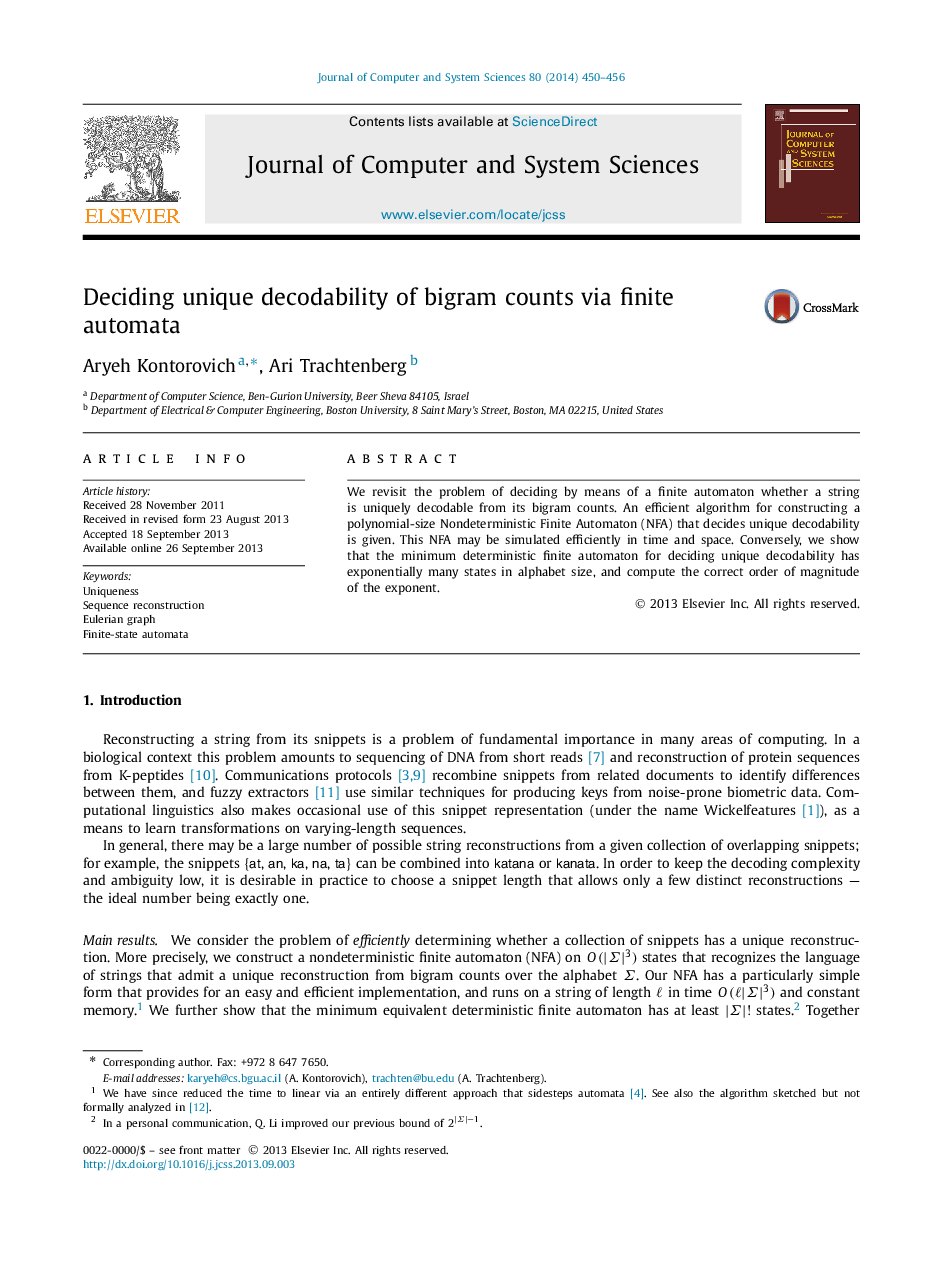| Article ID | Journal | Published Year | Pages | File Type |
|---|---|---|---|---|
| 429832 | Journal of Computer and System Sciences | 2014 | 7 Pages |
•We prove that the bigram-decodable strings form a regular language.•We construct a cubic-sized NFA for recognizing this language.•We show how to simulate this NFA efficiently.•We give a lower bound on the size of any DFA for this language.
We revisit the problem of deciding by means of a finite automaton whether a string is uniquely decodable from its bigram counts. An efficient algorithm for constructing a polynomial-size Nondeterministic Finite Automaton (NFA) that decides unique decodability is given. This NFA may be simulated efficiently in time and space. Conversely, we show that the minimum deterministic finite automaton for deciding unique decodability has exponentially many states in alphabet size, and compute the correct order of magnitude of the exponent.
